Note** I was able to get things operational by taking cloudfront out of the picture for the server.com domain by just using route-53 and the elastic beanstalk environment. Still would be great to know why cloudfront was blocking this, but not an immediate concern for development **
I am serving a node.js static socket.io client form an s3 bucket using cloudfront and route 53. I am attempting to get this client to talk to a node.js web server using elastic beanstalk. The webserver is connected with amazon certificate manager generated ssl using a route 53 domain and cloudfront.
using an http client and directly connecting to the beanstalk environment I am seeing desired functionality. However, when I try to move to SSL/https with the client and server I am receiving:
(log from /var/log/nginx/error.log on elastic beanstalk instance)
"GET /socket.io/ HTTP/1.1" 400 51 "-" "Amazon CloudFront"
here is the client code that is running from the static s3 https domain:
import ioClient from "socket.io-client";
const ENDPOINT = "https://server.com";
export const socket = ioClient(ENDPOINT);
here is the server side. process.env.port is set to 8080, and I can verify the app is listening on 8080 through elastic beanstalk logs.
const express = require("express");
const http = require("http");
const socket_io = require("socket.io");
const index = require("./routes/index");
const app = express();
app.use(index);
const server = http.createServer(app);
const io = socket_io(server);
const port = process.env.port || 4001;
server.listen(port, () => console.log(`http server listing on port ${port}`));
Inside the ALB I have an https listener set up on port 443 with Amazon Certificate Manager (ACM) ssl certification. The listener has a process that maps the 443 https to 8080 on http, from where I think ngnix should be acting as a reverse proxy to my socket.io listener on 8080
Listeners & Processors
In the root of my node project folder I have a .ebextensions directory and inside that a file named 01_files.config with these contents:
files:
"/etc/nginx/conf.d/websocketupgrade.conf" :
mode: "000755"
owner: root
group: root
content: |
proxy_pass http://localhost:8080;
proxy_set_header Upgrade $http_upgrade;
proxy_set_header Connection "upgrade";
proxy_http_version 1.1;
proxy_set_header Host $host;
From the comments in this post : socket.io handshake return error "Transport unknown" I found the following socket.io error codes
engine.io message type:
open =0
close =1
ping =2
pong =3
message =4
upgrade =5
noop =6
socket.io message type:
connect = 0
disconnect = 1
event = 2
ack = 3
error = 4
binary_event = 5
binary_ack = 6
so, 400 51 could possibly mean "Bad request, upgrade-disconnect."
Here is the response body :
{"code":0,"message":"Transport unknown"}
And here is the error on the client app in browser:
polling-xhr.js:268 GET https://server.com/socket.io/?EIO=3&transport=polling&t=NIgQkyr 400
which looks like a failed polling request on the xhr transport layer

